Follow Us:
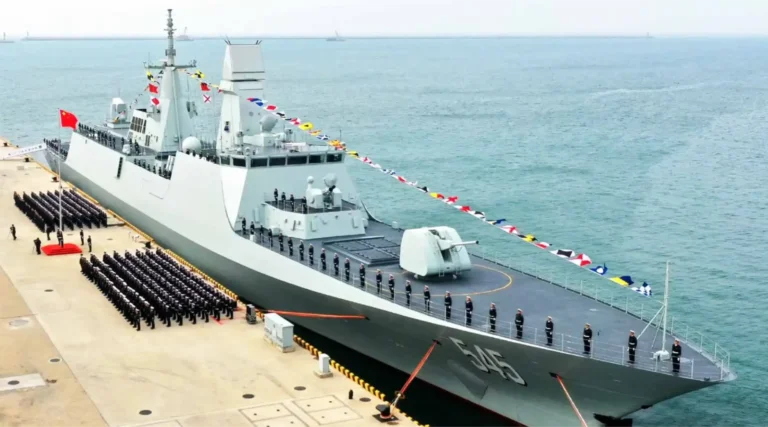
Share
The UR-77 Meteorit is a specialized Russian mine-clearing vehicle designed to create a safe passage through minefields for infantry and armored units.
Developed on the chassis of the 2S1 Gvozdika, a self-propelled tracked howitzer, this vehicle is equipped with the MDK-3, a rocket-propelled explosive line charge system.
The core function of the UR 77 involves launching a line charge filled with explosives across a minefield. Once the charge is deployed, it is detonated, generating a powerful shockwave and blast that either disables or triggers mines within the blast radius.
This method efficiently clears a path through the minefield, allowing soldiers and vehicles to proceed without encountering undetonated mines.
The UR-77 Meteorit entered service in the late 1970s and has played a crucial role in numerous military operations, including the Soviet-Afghan War, the Chechen conflicts, and more recently, the Syrian Civil War.
Despite its decades-long history, the vehicle remains an active asset in the Russian military’s arsenal and has been exported to several other nations.
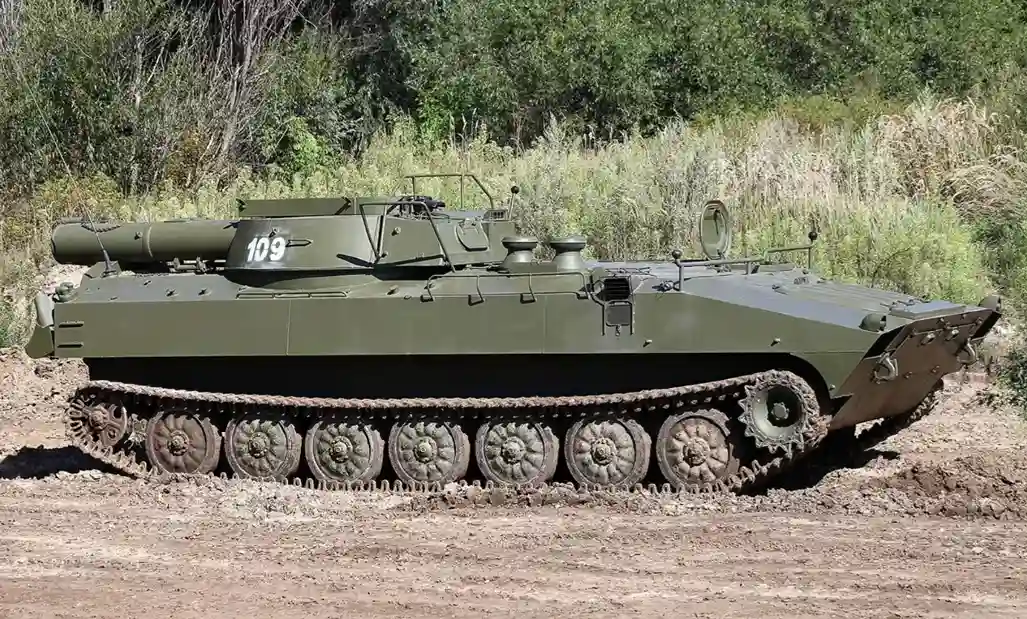
Throughout its operational lifespan, the UR-77 Meteorit has undergone several upgrades and modifications, improving its effectiveness in modern mine-clearing missions. These advancements have enhanced its capability to clear larger areas more efficiently and with greater precision.
Its success in the field has cemented its reputation as a reliable and indispensable tool for clearing mines, substantially minimizing the danger faced by troops and mechanized units when advancing through mine-laden terrain.
Mine-clearing vehicles have played a critical role in military operations since their introduction during World War I. Although the technology remained somewhat underdeveloped after the war, World War II marked a significant turning point in the evolution of this specialized branch of motorized infantry.
Traditionally, these vehicles have been attached to infantry units to clear paths through minefields, enabling troops to advance toward their objectives with reduced risk. The most common solution employed during World War II was the mine roller, a device still in use today.
However, the narrow path it cleared, the time it took to complete the process, and the danger of explosions damaging the carrier vehicle made it clear that more advanced solutions were needed.
This necessity led to the development of remote mine-clearing technologies as early as 1942, particularly by the Allied forces. The British and Commonwealth forces, including the Canadians, pioneered these efforts. One early innovation was the “Snake,” an oversized version of the Bangalore torpedo.
Later, a more flexible and sophisticated variant called the “Conger” was introduced in 1944. The Conger system utilized a 2-inch (51 mm) woven hose launched across a minefield by a standard 5-inch (127 mm) Allied rocket. The hose would then be filled with an explosive, creating a path through the minefield.

The Conger’s carrier vehicle was typically a Universal Carrier, a small tankette modified for the task. Once deployed, the hose was inflated using compressed air and filled with a ton of “822C” nitroglycerin before being detonated to clear mines.
However, the system’s use was short-lived due to a catastrophic accident in October 1944 during Operation Switchback. A tragic explosion at a depot in IJzendijke, Netherlands, resulted in the deaths of 47 soldiers and injured 37 others when two Bedford trucks carrying nitroglycerin exploded. This incident led to the Conger system being permanently retired due to the volatility of the explosive used.
Following this disastrous event, the British sought to create a safer and more reliable system. By 1950, they introduced the “Giant Viper,” a vast improvement over the Conger.

The Giant Viper launched a 250-meter (820-foot) hose, pre-loaded with explosives, across a minefield. This innovation allowed for faster deployment and greater safety, clearing a 20-foot wide path by causing a “sympathetic detonation” of mines, both anti-personnel and anti-tank, across a distance of about 200 meters.
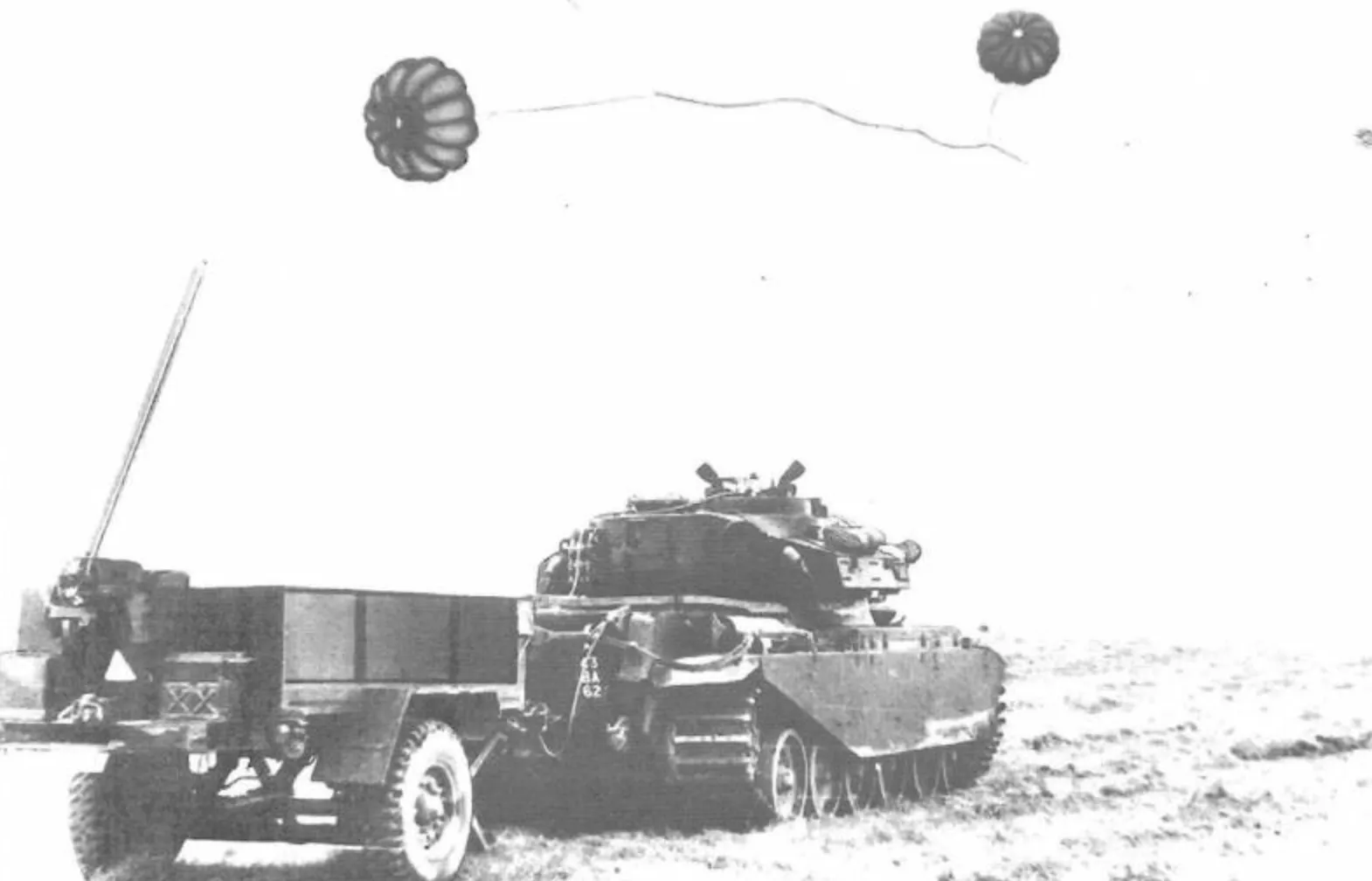
The Giant Viper has since been replaced by a more modern system known as Python, which offers the capability to clear larger areas with improved efficiency. Other nations, including the United States and the Soviet Union, also developed their versions of mine-clearing systems during this period.
One notable example of mine-clearing technology in action was during the South African Border War, where the locally developed “Plofadder” system was used to breach Angolan and Cuban minefields in the 1980s. In the First Gulf War of 1991, both American MICLIC (Mine Clearing Line Charge) systems, such as the M58, and British Giant Viper systems were employed by Coalition forces to penetrate the extensive Iraqi minefields on the Saudi-Kuwait border.
As technology continues to advance, modern armies around the world rely on these systems to ensure safe passage through hazardous minefields, reflecting the crucial role mine-clearing vehicles have played from their inception in World War I to the present day.
The UR-77 Meteorit was not the first vehicle specifically designed for mine-clearing operations. Its predecessor, the UR-67, was developed for this role and was based on the fully tracked BTR-50 armored personnel carrier (APC).
The BTR–50PK (also known as Ob’yekt 750K) variant, which received an armored roof upgrade in 1958, served as the foundation for the UR–67.
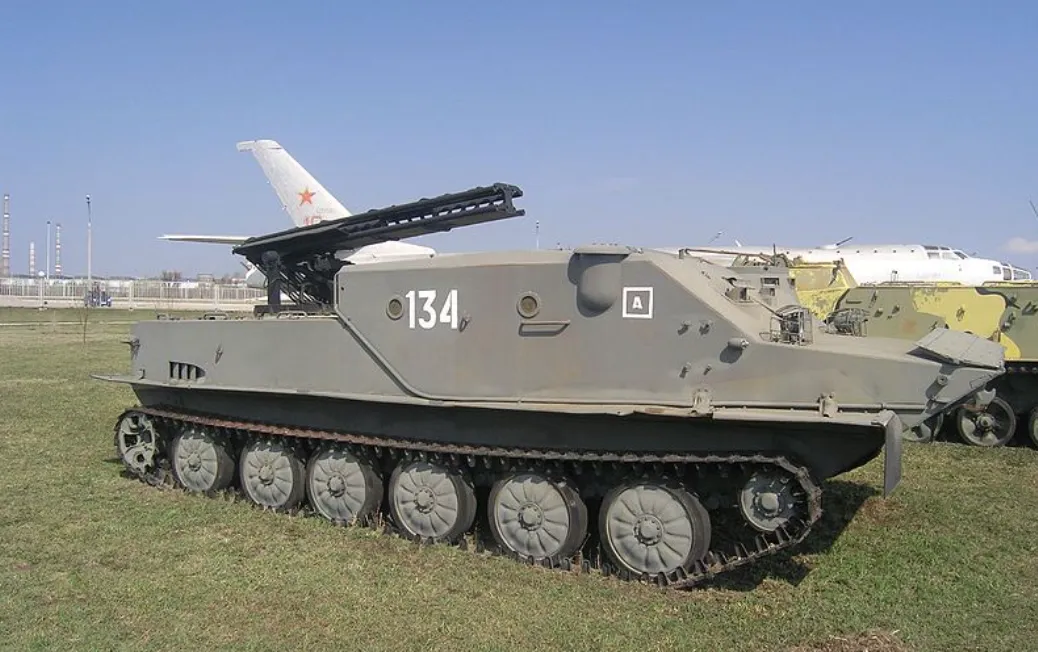
The UR-67 featured a rocket-based mine-clearing system with three launchers. These launchers deployed the UZP-67 or UZR-3 explosive-filled tubes, which were stored folded in the troop compartment, located in front of the engine.
When deployed, these hoses would create a cleared path through minefields. The resulting cleared area typically extended from 60 meters to 150 meters in length, but the width was relatively narrow only 2 to 5 meters.
For operations in swampy terrain or amphibious assaults, a sub-variant of the UR-67 was mounted on the amphibious PT-76 light tank chassis, enhancing its tactical mobility in such environments.
This variant was particularly useful for crossing rivers and clearing mines on beaches. By the time the Soviet Union dissolved, a limited number of UR-67 vehicles were still in service, though they had largely been replaced by the more advanced UR-77.
The UR-77 Meteorit mine-clearing vehicle was designed specifically for the engineer corps, drawing inspiration from the British “Giant Viper” system. Like its British counterpart, the UR-77 was engineered to rapidly clear paths through minefields, enabling troops and motorized units to advance without delay.
Its primary role was to ensure the continuous momentum of a combined arms offensive by providing a quick and efficient solution for clearing obstacles that could slow down or endanger infantry and armored vehicles.

The UR-77 Meteorit was based on the 2S1 Gvozdika self-propelled howitzer, sharing numerous components with the older MT-LB multipurpose tracked vehicle. It inherited the same drivetrain, engine, and welded armored hull from these predecessors.
However, the UR-77 features a specialized turret designed to accommodate its mine-clearing function. The turret is equipped with a hydraulically operated launcher that holds two missile-like explosive hose carriers.
These hoses, stored in a compartment behind the launcher, can be rapidly deployed across minefields, detonating and clearing a safe path for advancing troops and vehicles.
The Rusian UR-77 Meteorit mine-clearing vehicle is designed to function close to the frontline but is not meant to directly engage in combat operations. Its role is highly specialized, and it relies on the support of mechanized units and artillery for protection when deployed near enemy positions.
These covering forces ensure that the UR-77 can safely carry out its tasks without being exposed to direct enemy fire or threats from the battlefield.
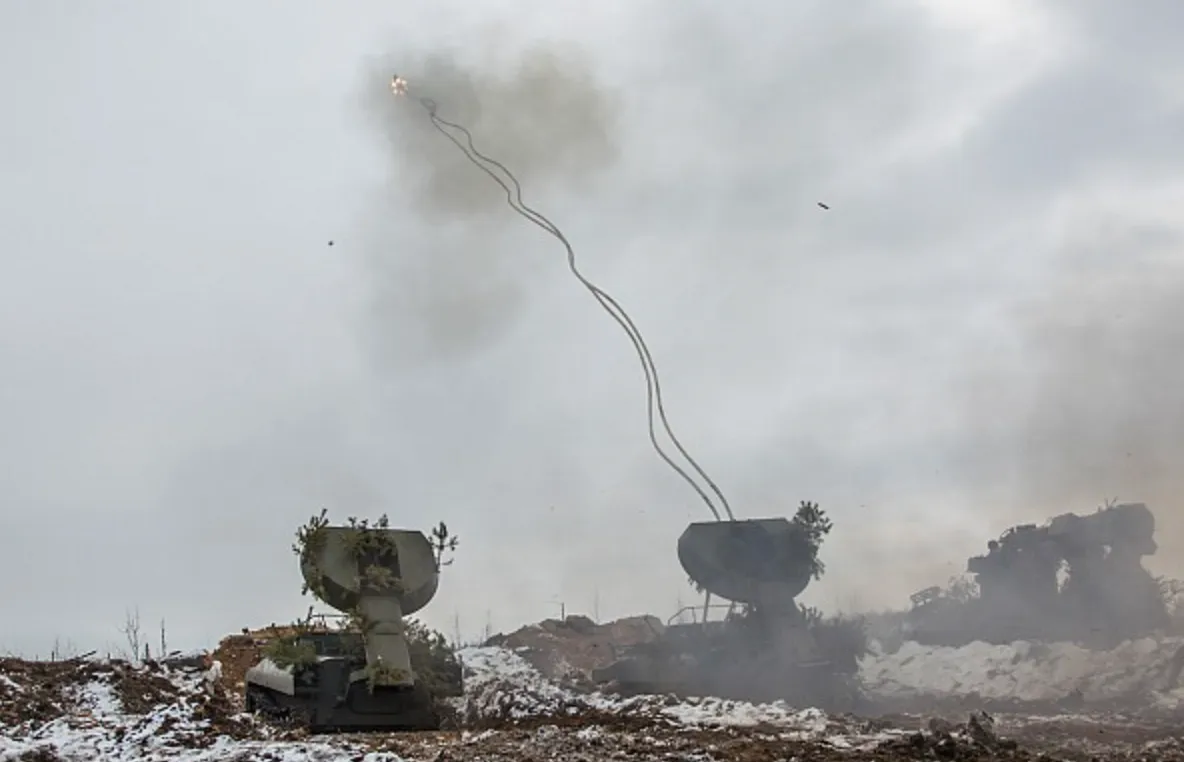
This unique military vehicle is equipped with two line charges, each capable of clearing a path approximately six meters wide and up to 90 meters long. The UR-77’s ability to clear such wide lanes in a single operation makes it a valuable asset in combat scenarios where rapid mobility is crucial, particularly for armored or mechanized units.
Reports from conflicts in Syria and Ukraine indicate that the UR–77 has also been employed in urban environments, a setting that typically presents significant challenges for traditional demining operations. In these cases, the UR-77’s capabilities have likely been adapted to clear paths through heavily fortified areas, showcasing its versatility beyond open battlefield conditions.
The UR-77 Meteorit is designed to be operated from a protected position, utilizing armored shielding to safeguard its crew during operations. This robust steel armor effectively defends against small arms fire and shrapnel from artillery, ensuring the safety of personnel inside.
This protective feature is critical, as it allows the crew to perform their duties with a reduced risk of injury, particularly in high-threat environments.
While the UR-77 excels in providing defense from direct fire, it is specifically engineered for missions that involve maneuvering near minefields. Its operational capabilities are focused on detecting and neutralizing explosive threats, making it a valuable asset in such scenarios.
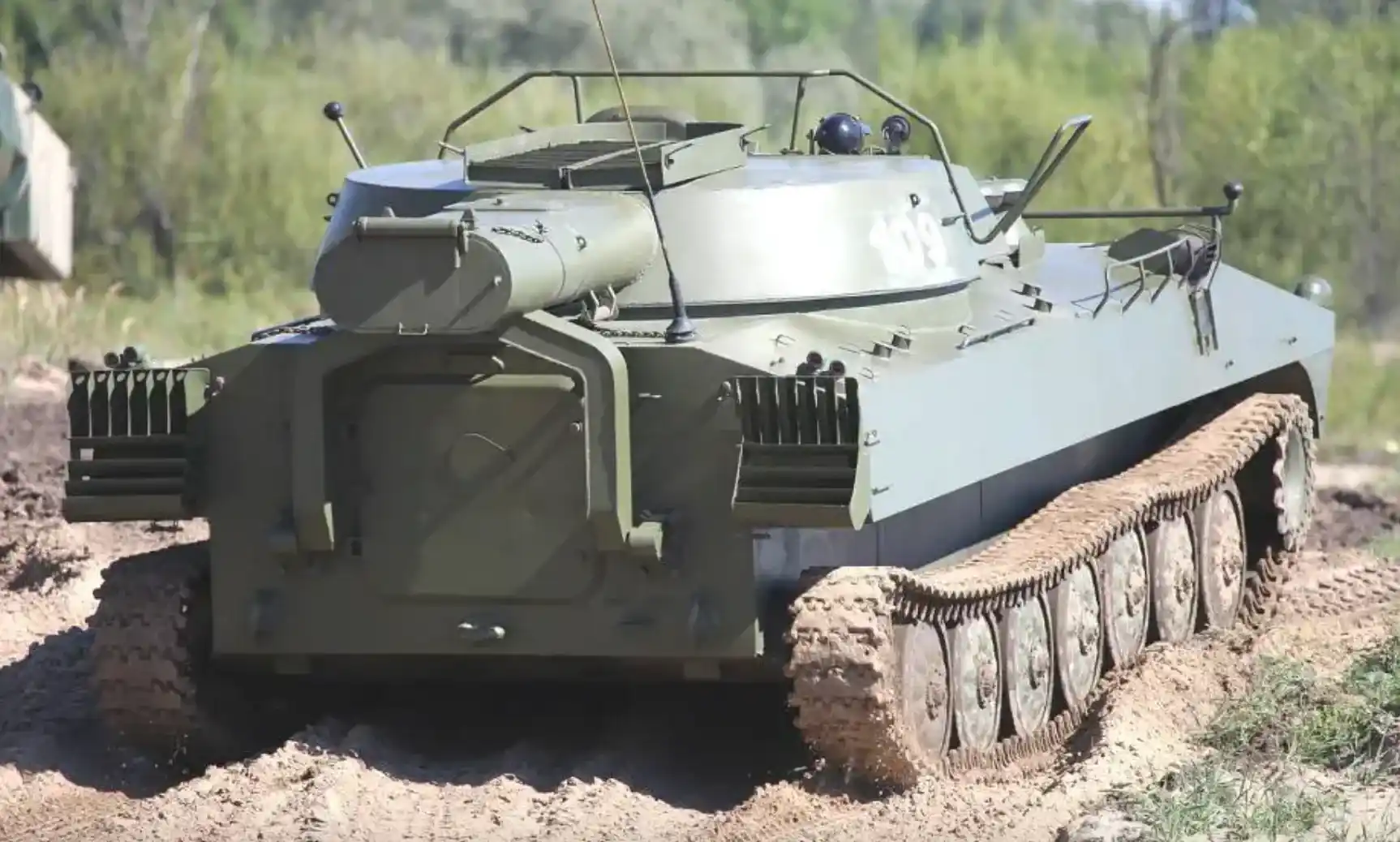
However, it is important to note that despite its armored protection, the UR-77 Meteorit lacks specialized features to withstand the impact of land mines. This limitation poses a significant risk, particularly when navigating through areas known to be littered with hidden explosives.
In summary, the UR 77 Meteorit combines essential protective measures with a specialized operational focus. Its steel armor offers commendable defense against small arms and artillery fragments, providing a secure environment for the crew.
Nevertheless, the absence of mine protection highlights a critical gap in its design, necessitating careful operational planning to mitigate risks associated with landmines during missions in contested zones.
The vehicle operates with a minimal crew of just two personnel: the driver, who also performs the role of a mechanic, and the commander/operator seated beside him during transit.
The powerpack, housing a 300-horsepower V8 diesel engine, is positioned in the front-right section of the hull, enabling the vehicle to reach a top speed of 60 km/h on roads. Additionally, it has amphibious capabilities, allowing it to navigate through calm waters at a speed of 4 km/h.
The running gear comprises six small steel road wheels fitted with rubber tires, a forward-mounted drive sprocket, and a rear track idler.
The total weight of the vehicle stands at 34,200 pounds, making it slightly lighter than the 2S1, which weighs 35,300 pounds. The suspension system uses torsion bars with the assistance of two hydraulic dampers to manage the vehicle’s movement across rough terrain.
The UR-77 Meteorit mine clearing vehicle is capable of clearing two consecutive paths, each approximately 90 meters long and 6 meters wide, effectively creating “safe zones” for advancing troops. The UR77 is equipped to deploy three types of demining systems: the UZ-67, UZP-77, and ZRShch.
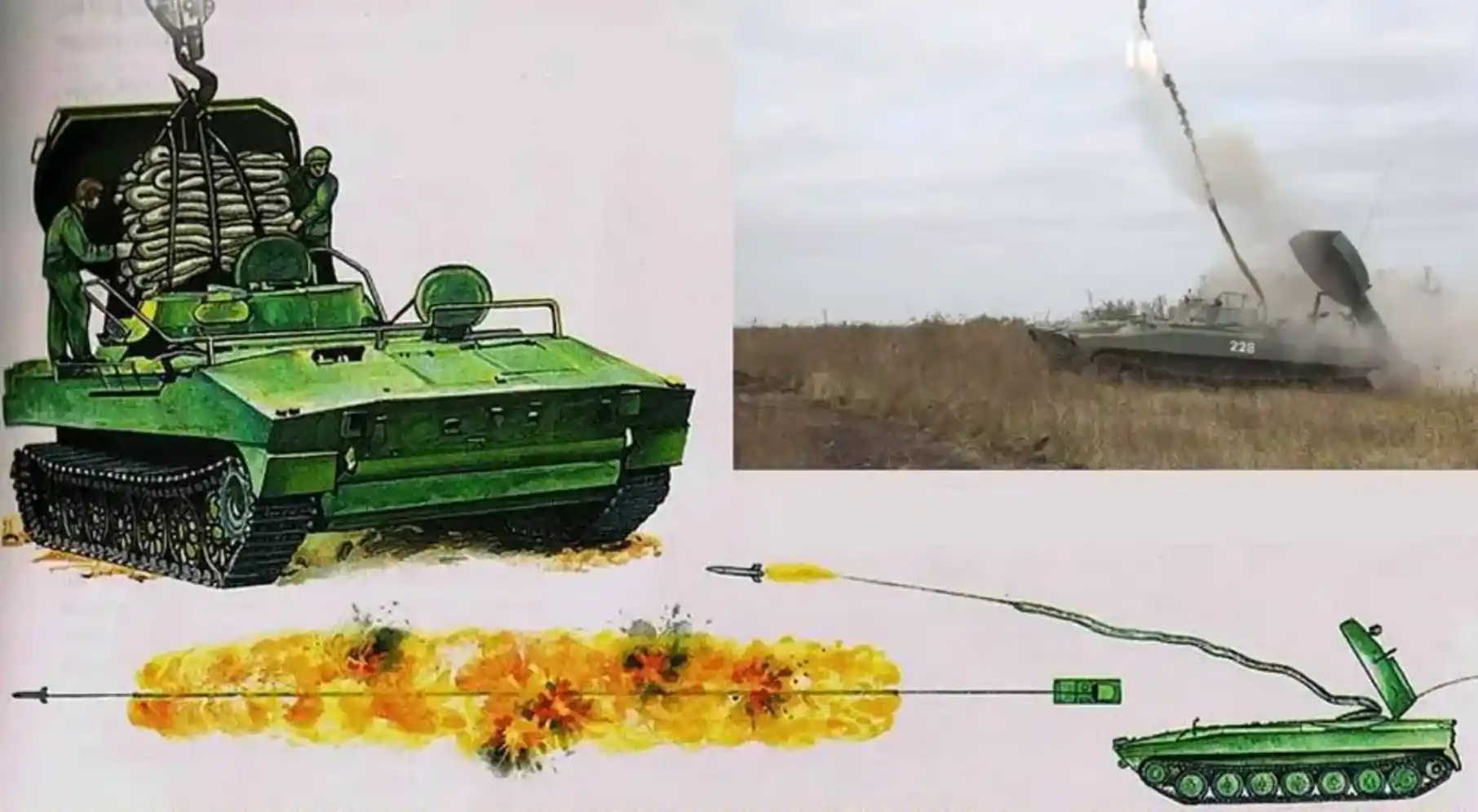
The demining charge used is a nylon hose filled with an explosive material similar to C4, which is electrically detonated. This hose is launched across the minefield by a rocket, which also pulls along an electric detonator cable.
Once the rocket reaches the end of its flight path, a disconnection mechanism is triggered, separating the rocket from the hose. A brake rope connected to the charge ensures the cable is straightened as the vehicle pulls away.
When the charge is properly positioned, the operator uses the vehicle’s control panel to send an electric signal through the wire, initiating the explosion along the length of the hose, also referred to as the “snake.”
This explosion triggers the detonation of mines within the designated area through overpressure, neutralizing mines of various types within the blast radius.
The operation typically takes about 3 to 5 minutes. For deeper minefields, the UR 77 Meteorit can clear an initial path, advance to the end of it, and repeat the process, creating a passageway that extends between 150 and 200 meters.
However, after clearing two paths, the vehicle needs to retreat to a safe location for reloading, which takes approximately 30 to 40 minutes. Once reloaded, it can either continue the operation or alternate with another freshly equipped vehicle to maintain the pace of the demining effort.
The explosive force generated by the detonation not only clears mines within the immediate vicinity but also disturbs others in nearby areas, making them more visible and easier to deal with.
The Russian UR-77 Meteorit is equipped with advanced radio communication systems, enabling continuous contact with other units and command structures during mine-clearing missions.
Both the driver and the operator benefit from the installation of periscopes, providing enhanced visibility while operating the vehicle under the protection of its armored shell.

For nighttime or low-visibility scenarios, the UR77 can be outfitted with night vision equipment, ensuring effective operations even in challenging lighting conditions.
To safeguard the crew in hazardous environments, the UR-77 Meteorit is integrated with a Nuclear, Biological, and Chemical (NBC) protection system, allowing it to function safely in areas with potential contamination.
Additionally, a fire suppression system is installed to reduce the risk of fire hazards and ensure the crew’s safety in the event of an onboard incident.
Physical Characteristics:
Crew Capacity:
Armament
Armor Protection
Propulsion System
Speed and Mobility
Operational Range
Dimensions:
User Countries:
Share
Defense Feeds is publication focusing on informing, engaging, and empowering the world by providing accurate information from defense technology.
Powered by Defense Feeds © 2025 – All rights reserved.